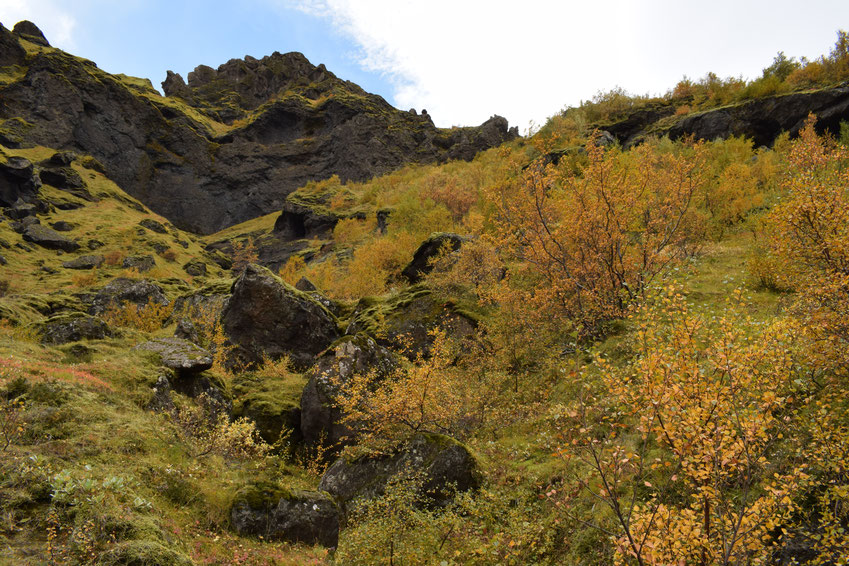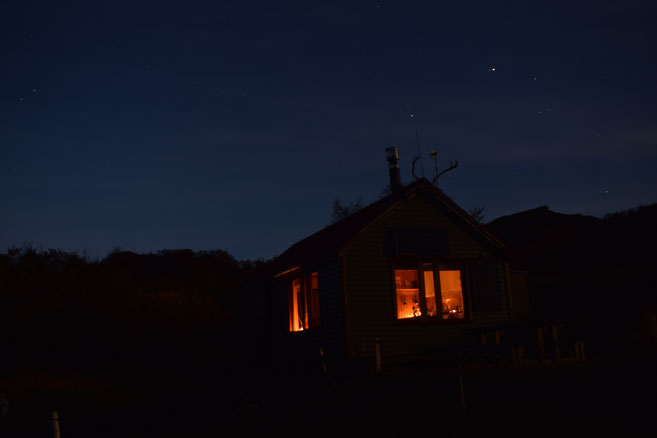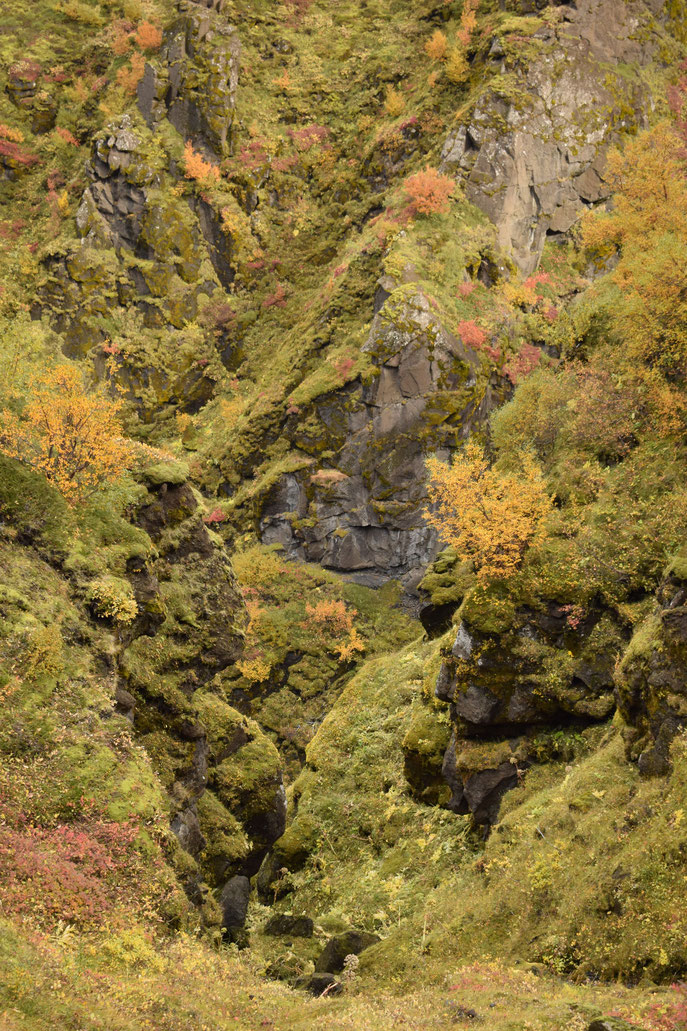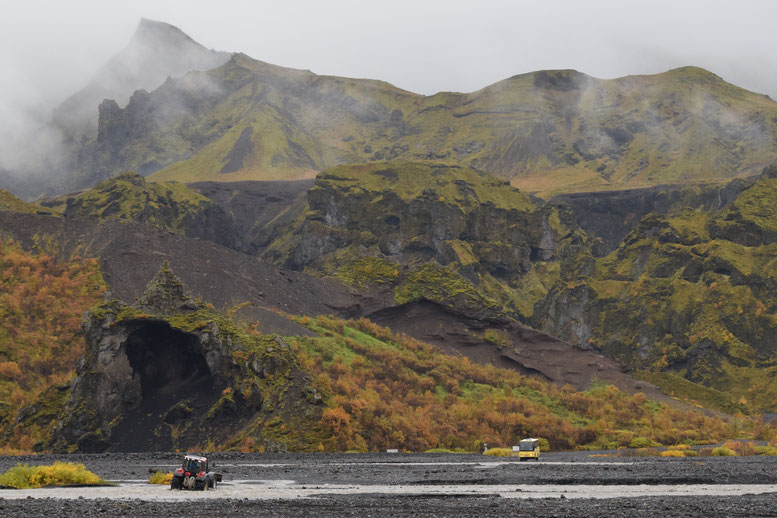
It had been five months since we first arrived in þórsmörk. There was nobody there then either; it was a privilege. There were swathes of snow in May, some filling gullies and plenty on the mountain tops. We had it on our tents at one point. The spring flowers, a scattering of yellow and purple, have come and long since fallen to the ground. The birch was golden when we came back, and lime green in parts; yellow leaves decorating the paths.


Before, I thought of autumn as a token season, any memory of colour washed away in the rain. Last year in Calais, I don't remember a single falling leaf. Compared to the gentle descent in Fjallabak, Þórsmörk's forests were startling.



We were there for two weeks, watching the colours drain as the trees became bare and hours of sunlight shrank. Increasingly early, we used candles to ward away the darkness.
I don't believe in ghosts, but sometimes I forgot that. The screaming wind ripped through the trees and "drying" washing flew over our garden, only staying up in southerly gusts, when
sheltered behind the house. Here, the clothes could create shadows behind our wooden blinds and slap menacingly against the windows in the night.
In the big, old hut, I soon made my peace with the ghouls (the ones I didn't believe in) by smiling into corners as I stoked up the fires for them. I cleaned the house carefully in the hopes they would approve; able to rest easy for the winter.

I revisited our old trail-building sites, remembering my friends as I stepped over their work.

If the darkness, wind and rain were haunted by ghosts, the trolls and elves had the half-light stillness. Up in the mountains or along narrow valleys, the green pillows of moss, scarlet leaved blueberries and young yellow birch formed a fantasy rockery. The turrets of Tindfjöll towered above; it's many doorways always too high for me to see inside. How deep did those caves go? I never felt unwelcome, but was always a careful visitor, looking for the moss before my feet and picking up small bits of litter that jarred in the perfection.





Separated from the road by notorious river Krossá, we had a tractor to help cars and busses if they got stuck. To drive, it was strong and reliable; not in any way as scary as I first imagined. Still lacking some enthusiasm and bravery, I was happier to wade into the river with the rope and let Dan do the pulling.

The state of the Krossá made it highly inadvisable to try and pass between Langidalur and Básar* on foot. Although I painfully missed my old haunts, those secret valleys which had brought me
so much peace, I had more time to weave loops around small parts of Þórsmörk. The teeth in my comb became finer and among the paths which lead to nowhere, I found some that shouldn't be
forgotten.
*Básar is another camp in Goðaland (the area on the other side of the valley.) We had lived there for a month last time.


Knowing the ends, but never having connected the middle, I wanted to follow this small red loop on the map.
The redwings scattered in front of me as I climbed through the trees and came out onto a sculpted ridge. Up above the famous Gluggahellir-"Window Caves", I could see both glaciers (Eyjafjallajökull and Mýrdalsjökull) and the whole mountain range to the north.




Further along, it was eerily quiet in the wide hollow between peaks. A stream ran there and the trees had grown strong. The stillness and silence were all-encompassing. If I had lain down, I could had slept forever, but our time had run out.

Thanks Iceland for the summer and you of course for reading. I have so much more to write about day walks from here and the other places we've worked, but in terms of whimsical ramblings, this is it for the season. After five months, our time in the mountains is finished, we have left Iceland and the winter is a whole other oyster. I write this in London. Join me if you like, I don't know where we are going.

My first post about living in the mountains in Iceland was called 100 days of sunlight - Þórsmörk, Goðaland and Fjallabak. The second one was Falling for Fjallabak.